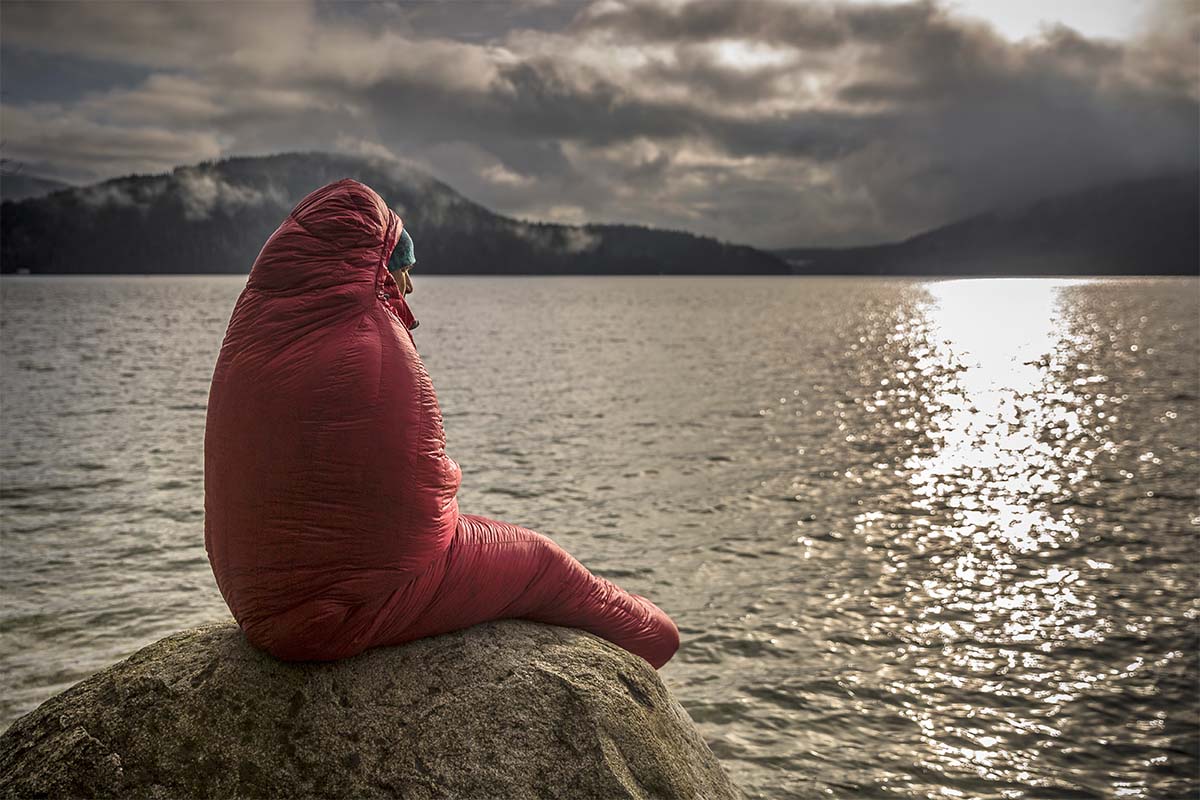
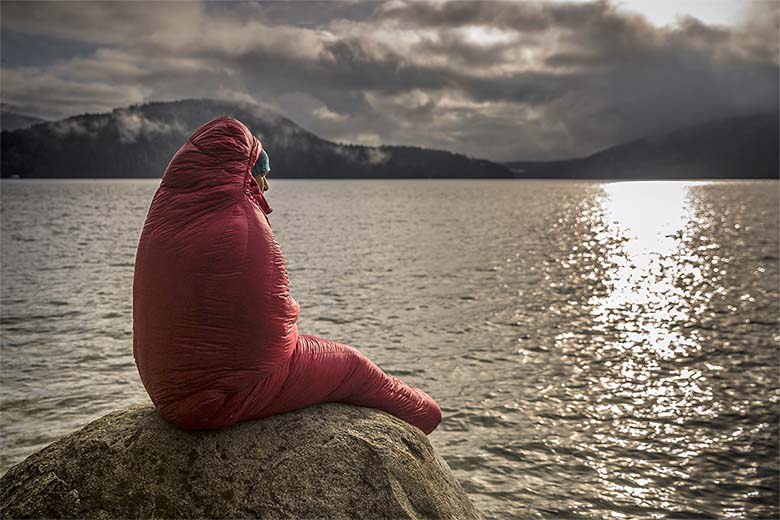
Choosing a sleeping bag can be a confusing experience. There are so many considerations to keep in mind: Down or synthetic? Snug mummy or roomy rectangular shape? And perhaps the most puzzling question of all: Which temperature rating should you choose? Below we break down the key considerations including the EN and ISO rating systems, how to evaluate non-EN/ISO-rated bags, how design affects warmth, the impact of your sleeping pad, and more. We've even included some helpful tips on maximizing warmth while sleeping in the mountains on cold nights. For more, see our article on the best backpacking sleeping bags.
Before jumping into how sleeping bags are rated, it's important to understand the categories, which are grouped by temperature ranges. In warm, summer-like conditions or at lower elevations, a summer bag (32 degrees Fahrenheit and up) can be a great way to save weight, space, and money. But remember not to toe the line too closely—places like the Utah desert, for example, can still get quite chilly at night. We think of the heart of the 3-season range as 20 to 32 degrees Fahrenheit (and up), which is typically warm enough for most summer and shoulder-season backpacking, especially in the high mountains where temps can dip below freezing in summer months. Plus, a little extra warmth isn't usually a bad thing. For winter camping and mountaineering (below 20 degrees Fahrenheit), a true winter bag is a necessity. The appropriate temperature rating for cold-weather adventures depends on the conditions, but expedition bags can run all the way down to -40 degrees Fahrenheit or lower.
Summer/low-elevation sleeping bags: 32°F and above
3-season sleeping bags: 20 to 32°F
Cold-weather/winter sleeping bags: 20°F and below
You may have seen "EN” (European Norm) or “ISO” (International Organization for Standardization) ratings when shopping for a sleeping bag. Both organizations have the same goal: to standardize the method for rating the warmth of sleeping bags. EN (formally known as EN 13537) was the previous method and is still used in many bags on the market, but in 2017, the ISO took over and introduced a new standard (ISO 23537). That said, ISO testing is so similar to the EN method that we can talk about them as one in the same.
Both EN and ISO tests include using a heated manikin wearing a long underwear top and bottom, a hat, and a closed-cell foam sleeping pad. Technically, EN offers four ratings, but "EN Comfort" (the air temperature at which an average female can sleep comfortably through the night) and "EN Lower Limit" (the air temperature at which a standard male can sleep for eight hours without waking) are the most relevant. A lesser-referenced rating is "EN Extreme," which is the temperature at which a standard female can remain for six hours without risk of death from hypothermia, but we want nothing to do with that rating. ISO Comfort and Lower Limit ratings are very similar, although we like that they specify that “Comfort” is meant for cold sleepers and “Limit” is meant for warm sleepers.
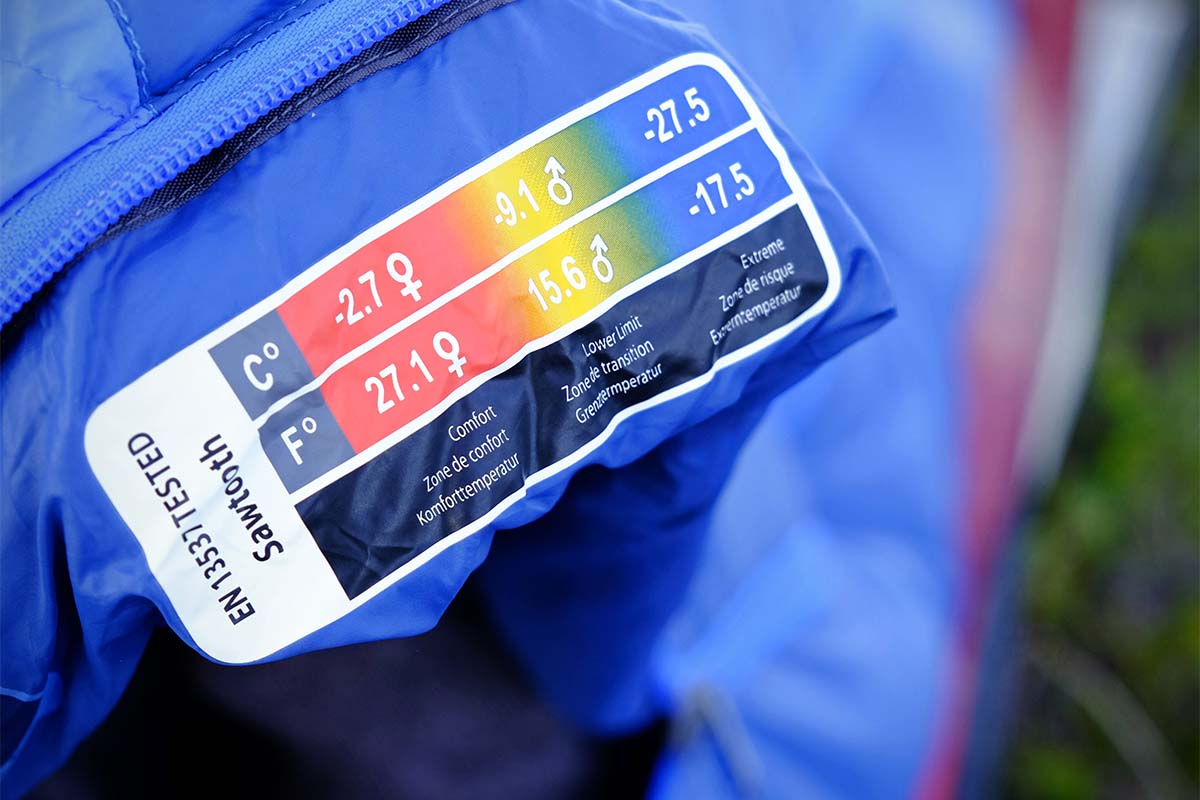
As far as standardization goes, many U.S.-based sleeping bag manufacturers have adopted either the EN or newer ISO testing methods, which is helpful for consistency and accuracy. For example, companies like REI Co-op, The North Face, Marmot, and Mountain Hardwear all use the EN or ISO system to varying degrees, while Western Mountaineering, Big Agnes, and Feathered Friends do not (instead, they set their own temperature ratings). Below we offer more information on what the EN/ISO ratings mean to you, as well as how to evaluate bags without official ratings.
As mentioned above, many prominent gear retailers do not use the EN or ISO system (we're guessing that much like being certified "organic," getting rated is a process that takes time and money). From our experience, non-EN/ISO-rated bags are a bit like the Wild West: The gear companies choose their ratings in-house with fewer external checks and balances on accuracy. Of course, these companies do not want unhappy customers, nor do they want people freezing at night, but non-EN/ISO ratings do need to be taken with a grain of salt. From our experience, we've seen significant variation between manufacturers and bags.
Two high-end sleeping bag brands stand out in terms of the warmth of their non-EN/ISO-rated bags: Feathered Friends and Western Mountaineering. Both are widely used by serious backpackers, alpinists, and guides, and we've found their ratings to be quite generous. For example, the Feathered Friends Swallow 20 YF is one of the warmest 20-degree bags we've ever slept in. One of our very experienced testers cowboy-camped in the mountains on granite with a thin sleeping pad and came away extremely impressed with the warmth it provided (he said it was the warmest 20-degree bag he’s ever used). On the other hand, mid-range and budget brands can be more hit-or-miss, and it often depends on the specific company or sleeping bag model.
.jpg)
How can you safeguard against sleeping cold? First, when buying a non-EN/ISO-rated bag—or any bag for that matter—give yourself a buffer to work with. It's the smart thing to do. In addition, reading reviews of a particular bag can be helpful. Finally, you can evaluate the down fill power (quality of the down) and fill weight (the total amount of down) of any bag. This isn't a perfect science and there are external design factors that matter, but knowing the quality and amount of down and comparing that to an EN/ISO-rated bag should be helpful.
Beyond the actual temperature rating of a sleeping bag, factors like the shape, features, and age of the product all play a part in how closely it lives up to expectations. First, let's discuss how a sleeping bag actually functions. In reality, it works much like a thermos: When you put a warm object inside, the sleeping bag helps that object stay warm (that object we're talking about is a human body). And if a sleeping bag has extra air space inside, it takes our warm bodies more energy to heat up that empty space. This means that you should try your best to find a bag with the right fit and one that doesn’t have a ton of dead space.
Comfort-seekers take note: Roomier bags can have empty spaces or voids and have a tendency to sleep a bit colder than their ratings. For example, Nemo has done a great job of creating a number of "spoon-shaped" models that are built for side sleepers and those who toss and turn (you can see the Nemo Riff 15 picture below). While these roomy bags are great for comfort, this extra space can make them feel drafty. On the other hand, a slim mummy-shaped bag with little room for movement will weigh less and take less energy for your body to warm it. Of course, this comes at the compromise of comfort, so deciding on the right balance is up to you. We are all for people who want to sleep comfortably in the backcountry, but just keep in mind that from our experience, roomier bags tend to sleep colder.
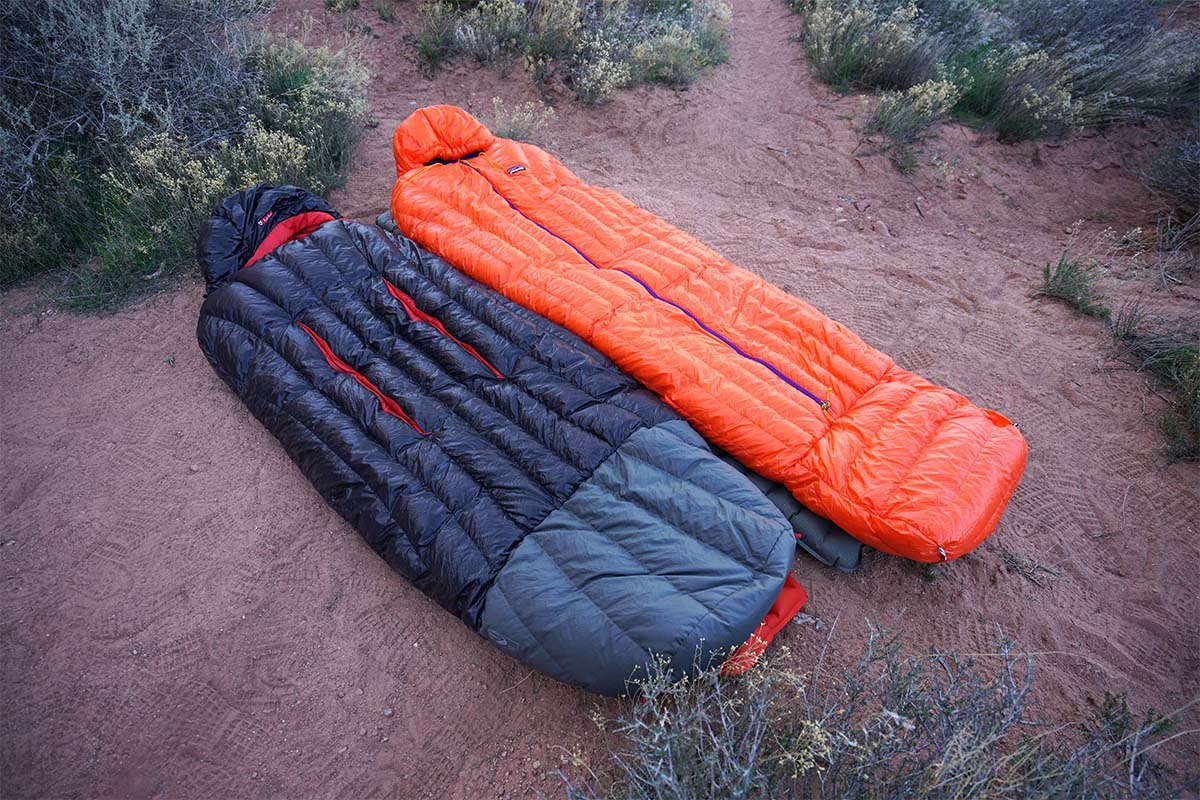
In addition to shape, the style of a sleeping bag can affect its warmth. For example, some thru-hikers opt for sleeping quilts, which forgo the traditional mummy shape for a minimalist blanket-style design. One of the big omissions on sleeping quilts is a hood: Instead of wrapping cozily around your head, a quilt cuts off more in the shoulder/neck region. Second, sleeping quilts often are secured around your sleeping pad instead of making a complete circle around your body. Both of these design features save weight but sacrifice warmth. If you know what you are doing—many thru-hikers sleep in a lightweight down jacket and can secure their quilt around their pad with their eyes closed—this system can be very effective. But newbie backpackers likely will want a mummy-style bag with a generous hood, a draft tube and collar, and insulation on the bottom of the bag. If you’re on the fence between the two designs, see our in-depth article on sleeping bags vs. sleeping quilts.
Finally, the age of your sleeping bag can greatly impact its warmth. My 10-year-old, 15-degree bag has lost much of its loft over years of use and storage, and likely a decent amount of its actual down. At this point, it probably acts much closer to a 30-degree bag. This is unavoidable to some extent, but you can try your best to take care of your gear and store it open instead of stuffed when not in use. Letting it breathe outside of its stuff sack is much healthier for a sleeping bag than keeping it compressed for long periods of time.
Have you ever found yourself sitting in a drafty cabin on a winter day, wearing a puffy jacket with the hood on and a pair of slippers, while the person next to you casually makes conversation while wearing a light sweater with bare feet? Or perhaps you are the warmer person? The truth is that everybody naturally runs at different temperatures based on a number of factors including gender, body mass, circulation, and age.
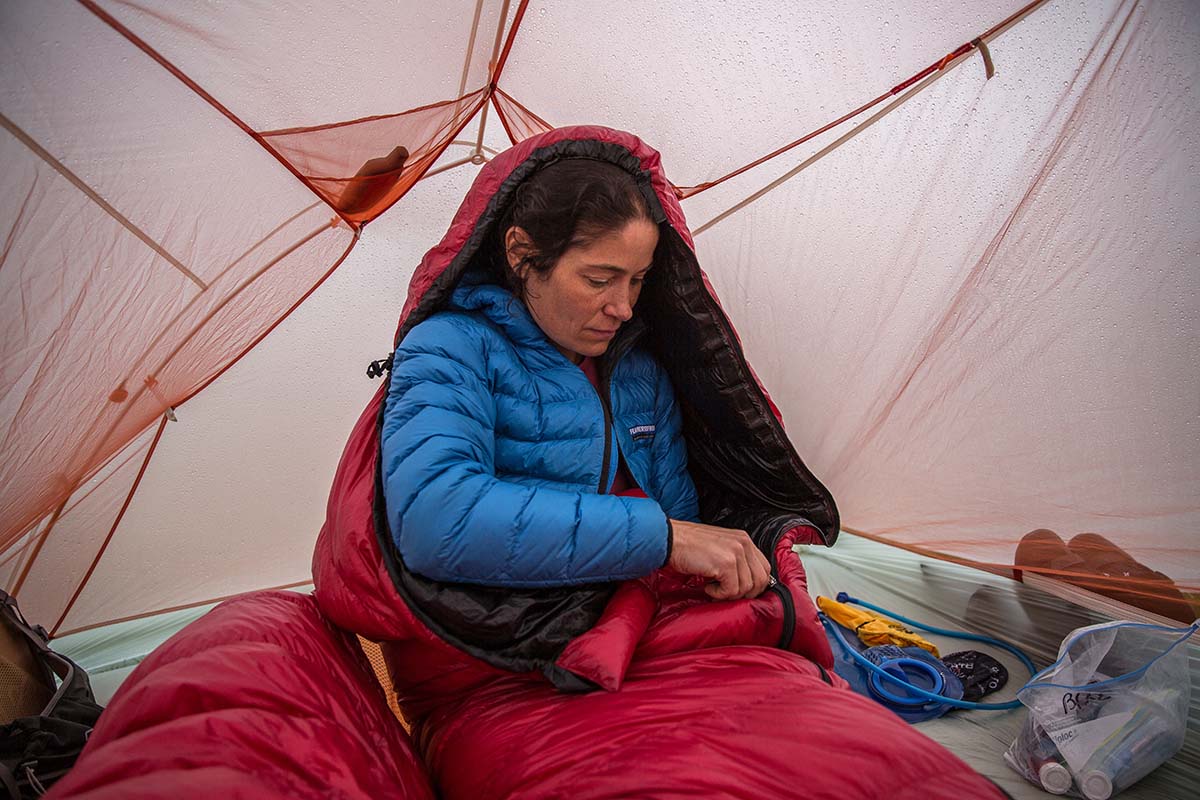
There is healthy debate as to how these factors impact warmth, but one generally accepted premise is that a lower muscle mass relative to body surface area can make you feel cold. You may have noticed that the EN rating system described above lists a higher temperature for women to sleep comfortably than men, and this is based on general presumptions about muscle mass. The same holds true for older people: You tend to lose muscle mass as you age, and therefore older people have a tendency to feel colder than younger people.
The bottom line is that in addition to the temperature ratings based on testing and general presumptions, you should take your own personal internal thermostat into account. If you frequently run cold, get a bag rated for colder temperatures. If cold doesn't bother you and you feel comfortable toeing the line, perhaps you are someone who can roll the dice on temperature rating (although we still recommend a buffer).
The temperature rating of your sleeping bag gets all the hype, but we are here to tell you that your sleeping pad matters a whole lot more than you might think. This piece of gear not only provides a comfortable surface on which to sleep, it insulates us from the ground, which can be cold or even freezing.
How are sleeping pads measured in terms of insulation and warmth? R-value is the key metric, which ranges from less than 1 (a summer pad like the Sea to Summit Ultralight with very little insulation) up to 8 or even higher (a winter pad like the Exped Dura 8R with goose down bonded to the interior). Most 3-season backpacking pads have R-values in the range of around 2 to 4, which provides a solid amount of insulation from most non-freezing ground. For example, our top-rated pad, the Nemo Tensor Ultralight Insulated, has an R-value of 4.2, which is plenty for most 3-season trips.
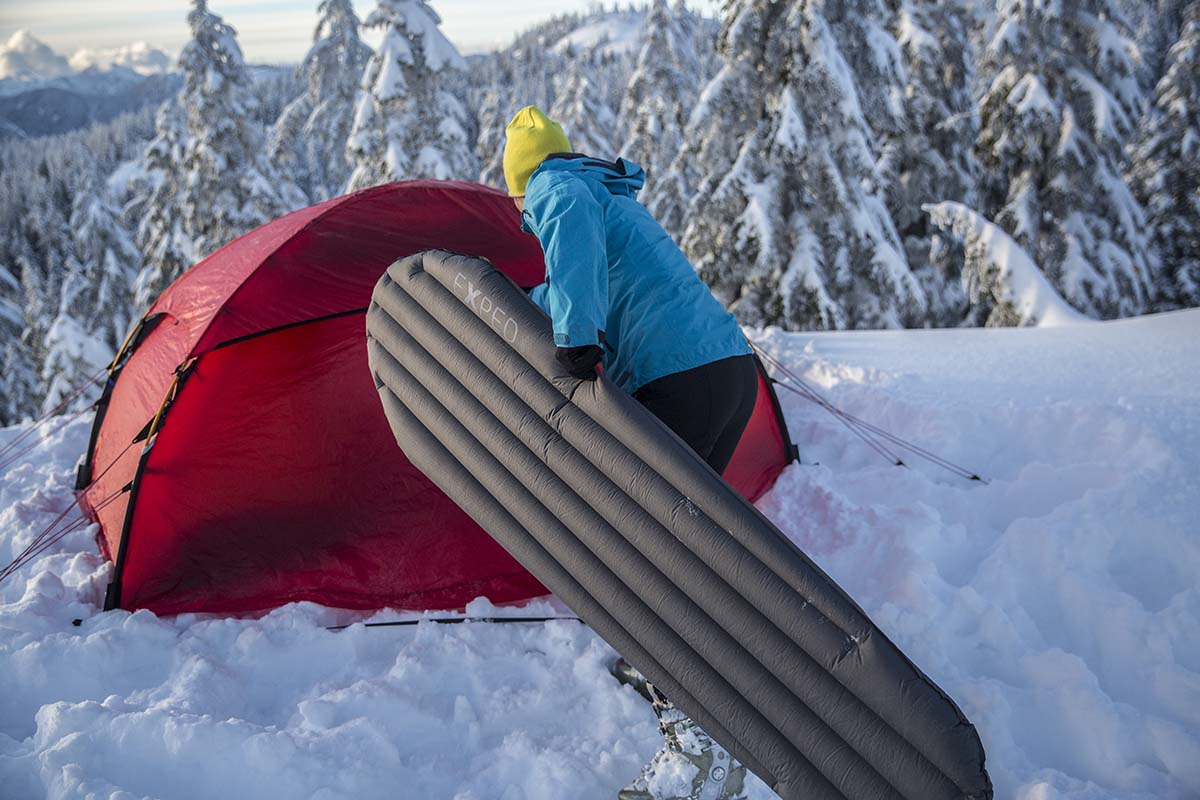
The key thing to remember here is that you are putting together a sleep system. If you buy a sleeping bag and spend all of your energy focusing on that temperature rating, but ignore the R-value of your pad (or the other factors listed in this article), you aren't seeing the whole picture. When we go backpacking, we think of the sleeping bag and pad as one united package, and always make sure to have a combined sleeping bag rating and R-value that will keep us happy at night. For a more complete breakdown on this topic, see our article on the best backpacking sleeping pads.
Weather can be fickle, and no matter how prepared we think we are after all of the sleeping bag and weather research we've done, sometimes we get caught off-guard in the mountains. Therefore, it's important to be able to pull tools from your proverbial toolbox when your sleeping bag just isn't doing the trick.
First, wearing the right layers can make a world of difference. When backpacking, it's a no-brainer to bring a solid set of baselayers, an extra pair of wool hiking socks, and a warm hat. In general, merino wool is the premier insulator in the outdoors—it's warm, wicks moisture, and doesn't build up stink like most synthetic fabrics. In addition, most backpackers bring a down jacket for hanging around camp after the hiking is done. In many cases and particularly if it's cool, we'll wear our down jacket over our baselayers at night. If you have a full mummy bag, this essentially is doubling down, but a good down jacket is never a bad thing to have around (at the very least, it can be used as your pillow).
.jpg)
It's also important to understand how your sleeping bag works. Before heading out, test the hood and draft collar, and make sure you are proficient in cinching them all the way down. If you don't zip the bag completely and batten down the hatches, it's easy to let cold air in, which is the last thing you want to do (unless you're hot and this is intentional, of course).
There are a few other things that you can do to warm up your sleeping bag. As mentioned above, a sleeping bag is similar to a thermos: Put something warm inside and the sleeping bag keeps it warm. Similarly, if you put a cold object inside, it may very well stay cold. On particularly frigid nights or if we've had a long, taxing day and are feeling chilled, we'll do jumping jacks, sit-ups, or a couple quick laps around the tent before getting inside our bag. If you enter warm, all your sleeping bag has to do is keep you that way. Alternatively, you can boil water right before bed, fill up a bottle (preferably a plastic, hard-sided one like a Nalgene), and stuff it in your sleeping bag with you. And perhaps our most popular and fun piece of advice: Eat some chocolate. Really. A calorie originally was a measurement of heat, and the more high-quality calories you eat before going to bed (fats are best), the more fuel your body will have and the warmer you will sleep. It's a tough job but somebody has to do it.
The crux of the issue with sleeping bags is that just about every backpacker wants to cut weight and save money. Warmer sleeping bags are heavier and more expensive, not to mention bulkier, so it's always a tough calculation on which temperature rating to choose.
That said, unless you really know what you are doing, don't cut it close. When choosing a bag, we look at the forecast and take the lowest expected temperature at night, then subtract 10 degrees to be safe. For example, in the Cascades of Washington State and the Colorado Rockies, two places where we frequently backpack, it's fairly common for the temperature to dip down to around freezing at night. Accordingly, a bag like the REI Co-op Magma 15 and its 28°F ISO Comfort rating (16 °F Lower Limit) should be perfect. If the temperature dips unexpectedly, which happens frequently in the backcountry, we should be all good. And the extra 10 degrees shouldn't make us feel too hot, plus it's easy to unzip the bag at the top or shed a layer. That's a much easier scenario to deal with than shivering through the night and waking up cold and tired.
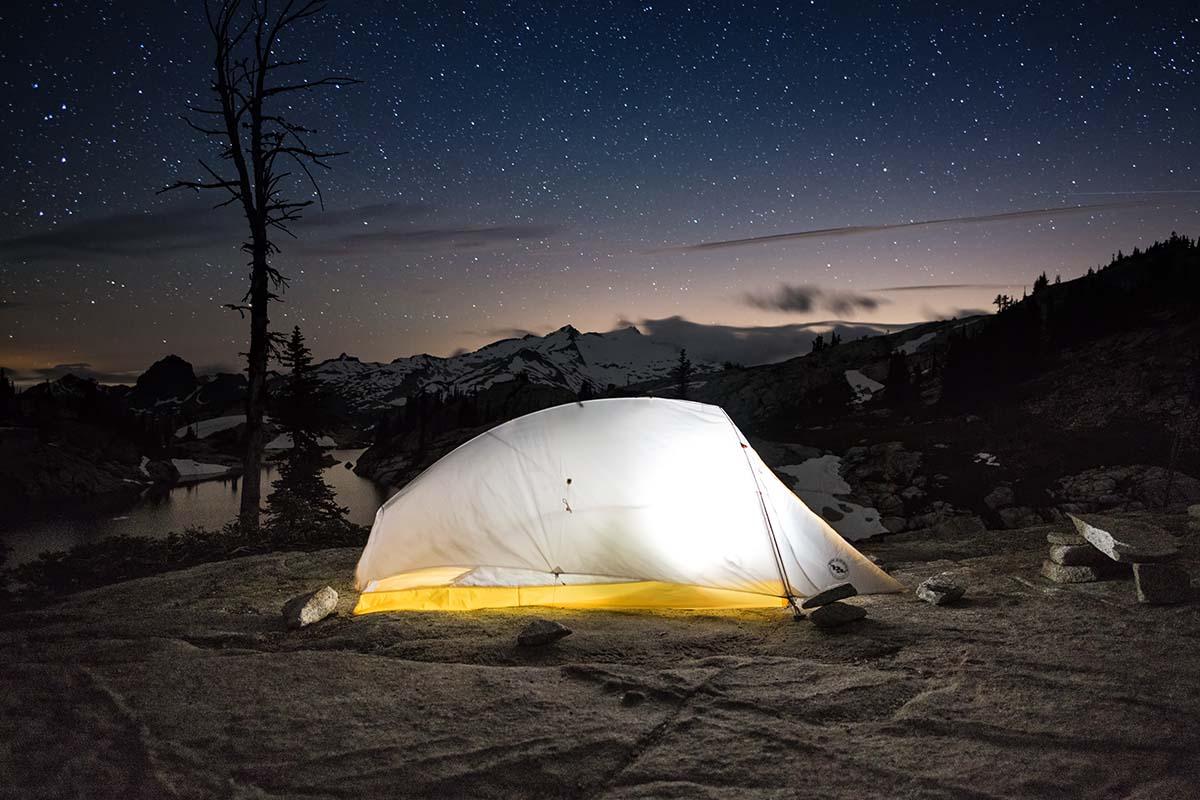
Unfortunately, like many categories of outdoor gear, there is no "one bag fits all" temperature rating. If you plan on doing some mid-summer camping at lower elevations or heading to the desert, a true summer bag with a 30- to 50-degree temperature rating may very well suffice (plus it will be lighter and cheaper). And if you plan on heading out in the winter or participating in any kind of cold-weather climbing or mountaineering, there's no way around getting a true winter sleeping bag (the temperature rating you need will depend largely on the activity and conditions). But for the Swiss Army Knife of 3-season backpacking bags, we love the 20-degree rating zone.
If you’re still looking for the best sleeping bag for your needs, below are a few of our top selections. For even more picks, see our article on the best backpacking sleeping bags.
Best Overall 3-season: Feathered Friends Hummingbird YF 20 / FF Egret YF 20 women’s
Best Budget 3-season: Kelty Cosmic 20 / Kelty Cosmic 20 women’s
Best for Cold Weather: Feathered Friends Snowbunting EX 0
Best for Warm Weather: Sea to Summit Spark 40
Best Sleeping Quilt: Enlightened Equipment Enigma Quilt 30